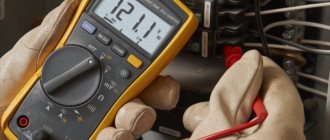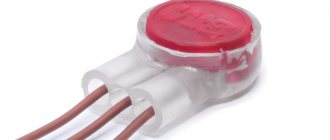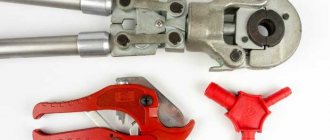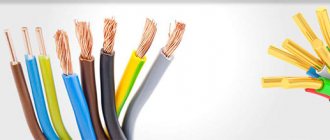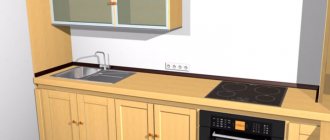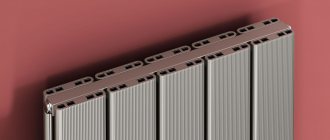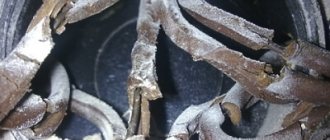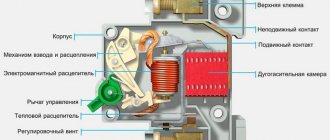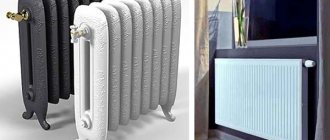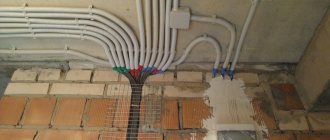Although, by modern standards, wiring in residential apartments is made primarily of copper wires, you can often find electrical wiring made of aluminum. If it is impossible to replace the old wiring with a new one, then you need to learn how to connect aluminum wires with your own hands. So, for example, how to connect a chandelier, socket and other electrical appliances correctly? Is it possible to connect aluminum wires with others? How to make the connection reliable? How to firmly connect aluminum wires to each other? You can get answers to these questions in this article.
Feature of aluminum wire
Features of aluminum
Due to its special characteristics, aluminum is difficult to work with. Also, during the oxidation of this metal, an oxide film is formed on the surface. This, in turn, prevents the good flow of current. This film melts at a temperature of two thousand degrees, and this figure is higher than the melting point of aluminum itself. If you peel off the film mechanically, then literally in a short period of time it appears again. As a result, the oxide film prevents high-quality contact of the connection.
Other features of aluminum include an increased degree of brittleness and fluidity. Based on this, the contact should not be subject to any mechanical stress. For example, if the connection is made using a bolt, then it must be constantly tightened from time to time. This is due to the fact that the aluminum will leak out from under the contact over time.
Solder the garland using improvised means
Problems often arise with garlands that are used to decorate a home or tree. Due to the use of thin wires, they are often interrupted and soldering is required. Among the features of this work, we note the following points:
- In most cases, the problem occurs in the control unit, since the wires are not attached securely.
- A breakthrough may occur along the entire length of the product.
- If all light sources are connected in parallel, then the failure of only one leads to an open circuit of the entire circuit.
It’s quite easy to find loose contacts, but a break is only possible when using a tester. Only after finding the break point can you start soldering. You can solder without a soldering iron as follows:
- The broken wires should be cleaned.
- You can make a small twist on which the paste is applied. It will be used to distribute the alloy used.
- The next step is to melt the solder, which can be done using a lighter or a candle.
- After this, the junction is isolated using a tube, which is also slightly heated to increase its ductility.
https://youtube.com/watch?v=Qdzl7ZskqXo
Similar technology can be used to restore the condition of headphones. The soldering procedure does not take much time.
Electrochemical corrosion
Is it possible to connect aluminum wire with others? Yes! But here it is important to take into account some important points. If there is no moisture, then such a connection will be eternal. However, moisture is present everywhere, which in turn contributes to the destruction of contacts. It is also important to take into account the fact that each electrical conductor has its own electrochemical potential. In this regard, accumulators and batteries were created, however, when water enters the junction of metals, a short-circuited galvanic cell is formed. As a result, one of the metals is destroyed. To find out which metals can be connected and which cannot, it is important to know the value of the electrochemical potential of a particular current conductor.
Factors of galvanic corrosion
For example, it is permissible to connect different wires if the level of electrochemical potential between them does not exceed 0.6 mV. Based on this, it turns out that the connection of copper with stainless steel will be of high quality with a potential difference of 0.1 mV, in contrast to the connection with silver (0.25 mV) or gold (0.4 mV).
Note!
If the copper wire is coated with tin-lead solder, then any mechanical connection to the aluminum wire is allowed.
Necessary tool
If you need to solder a wire or something else without a soldering iron, you need to prepare the following tool:
- pliers with thin noses;
- pliers;
- knife;
- scissors;
- sandpaper;
- file;
- needle file;
- brush.
An alcohol lamp or dry alcohol lamp should be used as a fire source.
The question of how to solder without a soldering iron seems absurd only at first glance. Such soldering can be done in very simple ways, or it can be done efficiently using solder paste.
The wire that was soldered has come off the garland, is it possible to repair it without a soldering iron, how else can this wire be attached?
Usually, a broken wire can be returned to working condition if you simply connect its two ends together at the break point - in theory, for electric current, it is not even necessary for the wire to be a single whole and it will flow, even if the wires are just tightly adjacent to each other . Therefore, to restore the working state of our device, it is enough to simply, for example, twist the wires together (only when the electrical appliance is turned off, of course. For extra safety, you can even wear rubber gloves), and then wrap the fastening area with electrical tape.
If you still need to solder the wires, then in the absence of a soldering iron you can use solder paste.
https://youtube.com/watch?v=SqIURUzVeUA
Without a soldering iron, you can firmly attach the wiring to the wiring in order to further use it for its intended purpose.
It’s not news to anyone that wires can be twisted by hand, having first disconnected them from the electrical network. Twisted wires must be well insulated with insulating tape.
But there is a better solution. The electrical cables twisted into a single unit (their connection points) must be covered with molten plastic on top. On the market you can buy special finger plastic, which is melted using a special gun and coated with it on the twisting area. This plastic can be heated with a match or a lighter.
You can also buy a wire connector at an electrical parts store. Insert the wiring into it on both sides and tighten it with clamping bolts, and then insulate this connection.
Twist
Electrochemical corrosion possible
This is one of the easy methods for connecting wires. In this case, absolutely no qualifications or special knowledge are required. But the result is a far from reliable connection. Why? Everything is due to the fact that during the period of temperature fluctuations, a linear expansion of the wires occurs and, as a result, a gap forms between them, which in turn increases the resistance. Afterwards, the contact oxidizes and after some time is destroyed.
Note!
This will not happen in the first year. But if you want to create a reliable and high-quality connection, then you should think about a more reliable alternative.
How is such a connection made? It is important here that one wire does not wrap around the other, but that they both wrap around each other. To ensure a high-quality connection, the copper wire can be tinned with solder. There is no restriction on the diameter of the connected wires. If the copper wire is stranded, then it must be tinned with solder. If the wire is thick, then three turns will be enough, and on a thin wire up to Ø1 mm, five turns must be made.
Twisting methods
Using piercing compressors
Walnut-type clamps are very convenient to use, but today you can find improved versions of them.
Piercing clamps are used once, but you don't have to strip the wires you need or subject the wires to unnecessary processing before making the connection.
It has a head with six sides, thanks to which the wires are pulled together. In addition, it has plates with teeth, thanks to which wires are pierced.
Such connections can be found in lines of self-supporting insulated wire, where it is very difficult to relieve the voltage.
The following are the advantages of how to make this type of connection:
- The plates in the clamp are insulated. Thanks to this, you can even use them on live wires, because the danger of electric shock is extremely low.
- The product has good tightness. This clamp is protected from moisture and other damage caused by weather conditions.
- These clamps last a long time and can be used even by a novice electrician.
- They are inexpensive.
- Can make wire connections from different materials, such as copper and aluminum conductors.
The biggest disadvantage of the connector is that it can only be used to make contact once. Typically, specialists do not pay attention to this, since the part is installed with a long service life in mind.
Threaded connection
Bolted
One of the most reliable options for connecting aluminum and copper wires using nuts and screws. Such connections will ensure high-quality contact for many years. This method can be used to connect wires of different sections, stranded and single-core.
So, first you need to remove the insulation from the end of the wire. Then a spring washer, a regular washer, a ring of one conductor, a simple washer, a ring of another conductor, a washer and finally a nut are put on the screw, which tightens the entire structure.
Note!
If the conductor has a Ø2 mm core, then the screw should be M4.
If the wire is stranded, then it should first be tinned with solder.
Error - Punctures or nuts
Previously, when there was a shortage of factory piercing clamps, many people connected SIPs to cables (most often on the facade of a house) through old Soviet “nuts”.
This cannot be done for two reasons. Firstly, you will not get a sealed connection. Oxidation after this is a matter of time.
Secondly, there is a gradual deterioration in contact. Due to the screws with nuts and periodic heating and cooling (max load - min load), the contact will weaken.
Once or twice a year you will have to go upstairs and tighten the screws with a screwdriver.
With a factory puncture of the SIP, I tightened the bolt once, tore off the nut and forgot about the contact for 40 years.
Terminal block
Terminal block
Terminal block is another modern method of connecting aluminum and copper wires. Although it is very popular, the screw and bolt connection method is much more reliable. However, the terminal block allows you to quickly and efficiently connect wires. In this case, there is no need to form rings at the end of the wire, or additional insulation. This design completely eliminates the possibility of contact between two bare wires.
This connection is made as follows: The end of the wire is stripped of insulation to a length of up to 5 mm. Afterwards, a wire is inserted into the hole in the terminal block and tightened with a screw.
Note!
The screw should be tightened with sensitivity, especially with aluminum wire.
This connection is very helpful in cases where a short piece of aluminum wire sticks out from the ceiling. If in this case you use the twisting method, then sooner or later the wire will simply break off. The same cannot be said for using a terminal block. Also, if aluminum wires were accidentally broken in the wall, then this technology simplifies their connection. But there is one thing! The terminal block cannot be hidden in plaster or in the wall without a special distribution box.
Terminal block and spring clamp
Block with clamp
This method of connecting wires appeared relatively recently. There are two types: disposable and reusable. In the latter case, there is a special lever that allows you to remove and insert the wire several times. Such terminal blocks allow you to connect stranded wires of different types of aluminum with copper wires.
They are widely used for mounting chandeliers, as well as for connecting wires in junction boxes. The wire is inserted into the hole of the block with force and is securely fixed there. It will take a lot of effort to remove the wire. In practice, it is better to use reusable terminal blocks, which allow you to redo the connection in case of a miscalculation.
10 mm of insulation is removed from the wire. The lever on the reusable terminal block rises up and the wire is inserted. Then the lever returns to the reverse position. The connection is ready!
Permanent connection
This type of connection has almost all the advantages of a threaded connection. You can highlight the speed of installation, durability, affordable price and ease of connection. The principle of its operation is simple. To connect the wire with a rivet, rings with a diameter of 4 mm are prepared. First put on the aluminum wire, then the spring washer, copper wire and flat washer. A steel rod is inserted into the rivet gun and compressed until the handle clicks. As a result, the excess conductor is cut off and the connection is completely ready.
The reliability of such a connection is very high. It is used for splicing wires. The most important requirement when using it is insulation of the connection area.
Solder paste for soldering without a soldering iron
Solder paste includes flux and solder. This is very convenient when soldering without a soldering iron. There is no need to tinker with these two components separately. It is enough to apply the paste once to the junction of the wires and then heat it to the melting temperature of the solder.
Solder paste consists of metal powder, flux, and fixative (an adhesive substance to hold the alloy in a liquid state within the soldering area). The paste contains tin and lead powder with the addition of silver. The proportions of the composition vary depending on the purpose of the product.
Soldering with a lighterWhen heated, the flux instantly evaporates, the solder firmly and tightly covers the entire twist of wires. The result is high quality soldering. The applied composition allows you to do without soldering irons and soldering stations.
For food soldering, it is recommended to use the following brands of pastes: POS 63, POM 3 and others. Paste soldering is used to work with microcircuits, where instead of soldering irons, thin metal rods are used, heated by external heat sources.
Solder paste
Twisting aluminum wires together
Parallel twist
We talked about the advantages and features of twisting above, but now we will consider this issue from a different angle, namely, connecting an aluminum wire with a similar one. In this case, the success of using the twisting method will directly depend on the cross-section, diameter of the wires and other important factors. Ideally, aluminum wires are best soldered by first twisting them with a groove.
- Parallel twist.
- Sequential twisting.
Serial twisting
However, it is important to be careful here, since an oxide film forms on the surface of aluminum wires. Even if you clean it, it will reappear very quickly, as noted above, so the ends of the wire can be cleaned with a file until shiny or with sandpaper. It is recommended to compress the lowest turn with pliers. Such a connection will be durable and strong.
What is required for soldering
This process does not require special equipment, so soldering can be done by anyone. So, during the work you will need the following tools and materials:
- Electric soldering iron with a power of at least 80 W;
- Cleaning agents (flux, rosin, mixture diluted on their basis);
- Solders suitable for the wire material;
- Wooden or plastic stand;
- File, sandpaper for sharpening;
- Pliers or tweezers for holding wires;
- Alcohol for treating the surface of the cord;
- Insulating tape;
- Heat shrink tubes.
The choice between rosin and flux is determined by the availability of the product and certain points. Thus, it is more convenient to use flux, since the wires are processed quickly, but there is a risk of poor-quality washing and gradual corrosion of the sheath.
Solders are selected taking into account the conductor material. For soldering aluminum wires, zinc products (TsO-12, TsA-15, P250A) are better suited, and for working with copper, POS 40, 50, 60 made of tin and lead are recommended. Solders with the addition of rosin are convenient, which eliminates the need to clean the phases.
Useful tips and tricks
Each wire connection must be properly insulated.
It is recommended to place them in junction boxes. If such a connection is simply plastered in the wall, then access to it is limited and, accordingly, it will be impossible to tighten the contacts. Although if you use spring clamp technology, this will not be necessary.
Connecting wires in the distribution box
If you want to make such a connection with your own hands at home, it is not recommended to use soldering or welding wires if you have no experience in performing such work. The best option would be a contact clamp or one of the methods described above for connecting aluminum wire to copper or to each other.
So, we have reviewed with you the most common methods of connecting aluminum wire. Of course, if you have no experience or are simply afraid to take on such work, then it is better not to risk it and turn to a specialist. Otherwise, if you have experience with such work, proceed by following all the recommendations in this article.
Error - Shear nut
Electricians who are faced with the installation of SIP for the first time and do not fully understand the principles of connecting wires through a puncture may generally leave the shear nut in place.
Yes, yes, this happens (they are afraid to break
